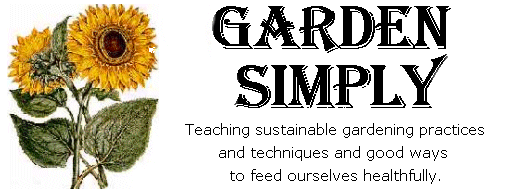
|
|
Home Beware of Sour MulchThe Plant Disease Clinic routinely receives specimens of plants that have been injured by nonliving or "abiotic" phenomena. These specimens are the most difficult to diagnose because no tangible structures of the cause of the problem (e.g., fungal spores, bacteria, nematodes) can be found; only the damage is evident. To further complicate the diagnosis, many abiotic factors cause similar symptoms. For example, both drought and excess water can cause similar symptoms -- both damage roots, and the plant wilts and turns brown. In the Plant Protection Newsletter (Vol. 10, No. 5), one of the abiotic problems we reported this year is damage from mulch toxicity. Diagnosis of this problem can be a bit tricky because symptoms resemble those caused by drought, excess water, chemical injury from certain pesticides, or fertilizer burn. Understanding how "sour mulch" damages plants should help you to diagnose the problem.Mulching garden or landscape plants with bark, straw, leaf, or sawdust mulch can be beneficial to plants in a number of ways. Mulch not only helps conserve moisture around plants, but also serves as a barrier to weed growth and can be an effective method of weed control. It is generally beneficial to plant growth as long as it has been composted properly and is applied properly to the plants. Proper application of mulch includes not applying it in too thick of a layer and avoiding direct contact with the base of plant stems, especially those of tender herbaceous plants. When organic material used for mulch has been composted improperly, the result can be "sour mulch," which is toxic to lawns, bedding plants, and newly planted shrubs. Toxicity of sour mulch is caused by by-products of the decomposition process, such as methane, alcohol, ammonia gas, or hydrogen sulfide gas, that build up to levels toxic to plant growth. Symptoms of mulch toxicity occur within 24 hours after application and include marginal leaf chlorosis, leaf scorch, defoliation, and/or death of plants. Methane, alcohol, and other toxic by-products of composting may build to toxic levels in piles of organic materials subject to anaerobic conditions (i.e., low in oxygen and containing over 40 percent water). Large piles, such as those accumulated at lumber mills or those used to compost mulch by companies that manufacture it, can develop pockets low in oxygen and high in water content. Reputable companies turn the windrows when necessary, thus avoiding low oxygen/high moisture conditions. Hardwood barks are especially high in cellulose so special care should be taken to compost this type of mulch properly. Pine bark contains mostly lignin instead of cellulose and is not as prone to forming toxic by-products. Pine bark that consists of less than 10 percent sapwood does not have to be composted before use. Properly composted organic material should be mostly lignins with little or no cellulose. The only way to protect plants from mulch toxicity is to avoid using toxic mulch. Although most companies that manufacture mulch and compost are concerned with producing a quality product and would not knowingly sell an inferior or dangerous product, it is possible to purchase toxic mulch. Therefore, it is important to be able to recognize toxic mulch before you apply it around plants. Good mulch generally smells like fresh-cut wood or garden soil. Sour mulch may smell like vinegar, ammonia, sulfur, or silage. If you are unsure of the smell, you can have the pH of the mulch tested. Sour mulch is very acidic, and usually has a pH of 1.8 to 3.6, whereas properly composted organic material has a pH of 6.0 to 7.2. The pH of sour mulch is too low to be neutralized by liming; however, the pH of the mulch usually does not change soil pH around plant roots significantly. Diagnosis of mulch toxicity after it occurs can be difficult because the toxins that cause the damage dissipate quickly after they cause the damage and cannot be detected. However, pH of the mulch can still be measured and is a good indication of sour mulch. Circumstantial evidence is often the easiest means of diagnosis -- if plants develop any of the symptoms listed above within 24 hours of mulch application and no pesticides or fertilizers have been applied recently, damage is due most likely to mulch toxicity.Removing the mulch is usually not much help at this point since the damage has already been done, and the toxins have dissipated. Plants often recover from the damage by putting out new growth. |
| Home :: Reading Room :: Newsletter :: Reminders :: Sustainable Gardening :: Nursery |
|
Trees & Shrubs |
Flowers |
Composting |
Soil |
Tools |
Books How To's | ; Links | |
| Technique | Practical Advice | Children | Internet Gardening | Vermicomposting | Pest Management Overweight Kids |
| Home | Newsletter | About Us | Support | Contact |
|
GardenSimply.com | All Rights Reserved 2005 |

Garden Journal !!Join "Garden Notes" and plan for Harvest Success as you track and record your gardening progress. Your Free Personal Garden Journal includes printable pages making it easy for you to:
|
|
|
|
|
|
|
|
|
|

|
|
|
|
